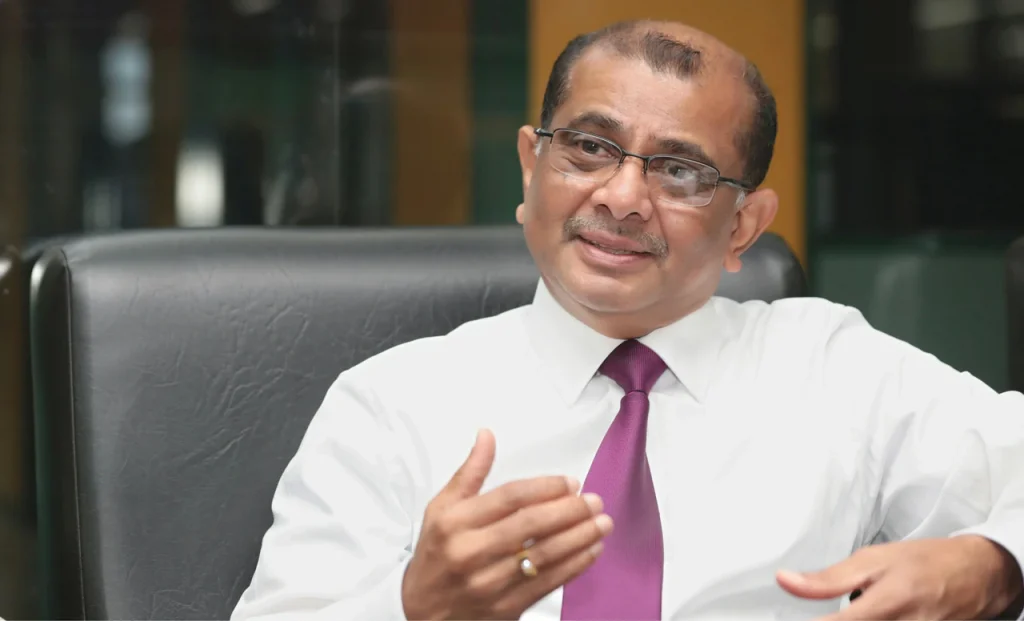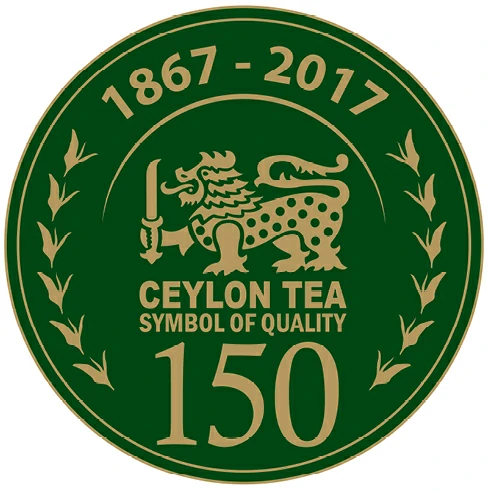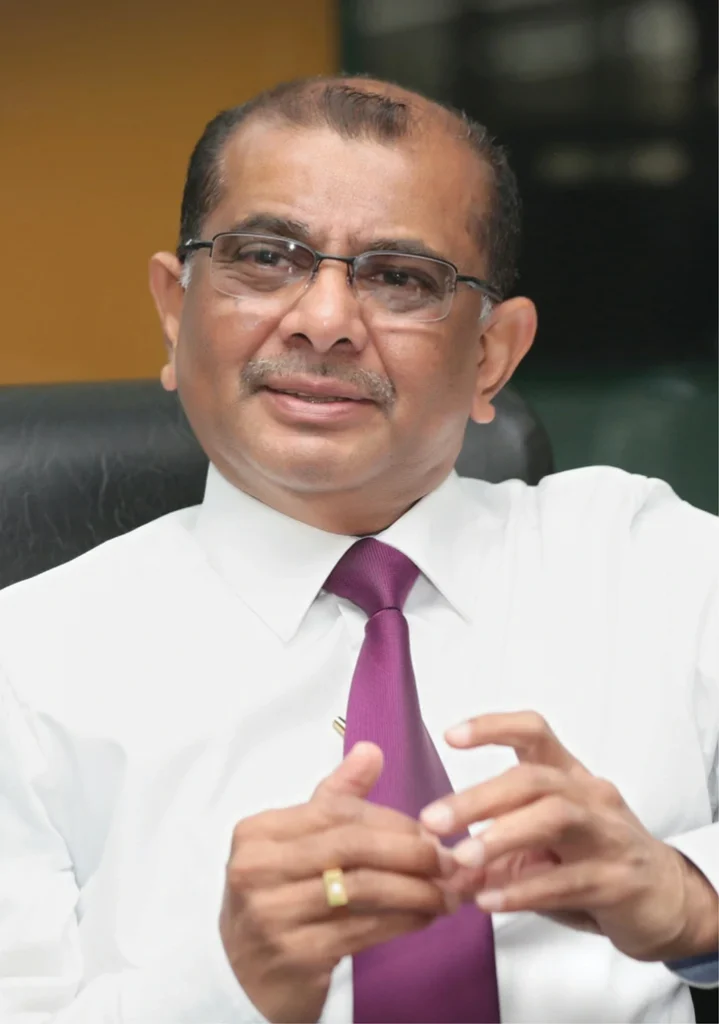
A brand born nearly 150 years ago, Ceylon Tea has maintained its identity and quality while embracing innovation. As consumer trends continue to change and the industry strives to enter different markets, many opportunities have emerged creating room for new players in the market. Jayantha Karunaratne, Chairman and Managing Director of Imperial Tea and Vice Chairman of the Colombo Tea Traders’ Association (CTTA) speaks about capitalising on new opportunities.
By Keshini de Silva | Photography Menaka Aravinda
In today’s competitive market, what is unique about Ceylon Tea?
Ceylon Tea is a brand. It is a brand that has historical value. In certain consumer markets, such as Russia, Iran, Iraq, UK and Japan, there is a certain brand value that Ceylon Tea has earned. Therefore, in these markets we have a competitive edge. However, there are certain markets that do not know the Ceylon Tea brand quite well. Therefore, the Unique Selling Point is then the exclusive products we offer and of course the value for money.
The total tea production of Sri Lanka is quite small when compared to the total production of competitors. However, our teas fetch a high or premium price due to its quality and unique character. Specialty teas too are a key product differentiator. In terms of orthodox tea, we are the world’s market leader due to the high quality of our tea. Over the years Vietnam, another orthodox tea producer, has been trying to meet our quality levels and they are improving in this regard. However, Ceylon Tea is a superior and distinctive product. This is due to the unique appearance of the leaf and liquor character of Ceylon Tea, features that have been identified by distributors and buyers. The characteristics maybe a result of Sri Lanka’s distinctive climatic conditions.
As a relatively new entrant to the Ceylon Tea industry, what is your opinion on the industry and the tea export market?
The tea industry in Sri Lanka is disciplined. Our auction system, which has been in operation for around 140 years, runs quite smoothly. Most countries do not have a structured auction system such as ours, which allows producers to dispose of their goods effectively.
Our Auction System, Which Has Been In Operation For Around 140 Years, Runs Quite Smoothly. Most Countries Do Not Have A Structured Auction System Such As Ours, Which Allows Producers To Dispose Of Their Goods Effectively.
Sri Lanka exports tea to many countries: Russia, Middle East and the Commonwealth of Independent States (CIS) being our major export markets and Japan, China, Australia, US and Canada being mature markets. Exporters should be focusing at producing for the consumer. Instead of being a raw material supplier, they must create their own brands. That’s where the opportunities lie, not in supplying to other tea labels.
There is a lot of opportunity and potential for Ceylon Tea, however I feel that exporters are highly regulated. That limits us in the face of international competition, especially multinationals. For example, the inability to import tea for blending has had a negative impact on exporters. Regulation is a must for the protection of any industry and to ensure quality, however regulations should not inhibit the growth of the industry.
Although there is progress, every company in Sri Lanka reaches a certain saturated point. On the other hand, there is the issue of Sri Lanka producing a limited quantity of tea leaves. We all have growth, but if you want substantial growth you need additional volumes of tea. This year there has also been a severe drop in the crop levels.
Exporters Are Highly Regulated. That Limits Us In The Face Of International Competition, Especially Multinationals.
A potential solution is the blending hub, although the word ‘hub’ has become a term associated with negative connotations. This is due to certain misconceptions about the concept. Allowing tea imports is essential for the industry to grow. Obviously, when you bring in imports there will be issues, but measures must be taken to curb the negative issues and to especially protect the local producers. If you look at Sri Lanka, it was originally coffee and when the blight hit, the fields were converted to tea plantations. The industry steered forward by adapting and overcoming obstacles. Therefore, we must take measures to ensure that the industry moves forward.
What opportunities did you see and capitalise on when entering the industry in 1994 at a time when the industry was dominated by large and established companies?
When we started in 1994, the general pattern was to supply to buyers or export tea as a raw material. We therefore focused our efforts on creating a consumer brand. We were very careful in terms of quality, prices, our services and packaging. Our strategy was to create value for the buyer.
What we understood was that being a raw material supplier creates uncertainty as the buyer exercises a lot of control. However, if we created our own brand we would be in charge. Starting off with a mere label on a packet we have created a brand image supplemented by the value of the Pure Ceylon Tea brand. Over the years our concepts and marketing strategies on targeting various market segments have been formulated and refined. When you look at our packaging for various target markets you would not know that it comes from the same company.
How has the Ceylon Tea industry changed since your organisation entered more than a decade ago?
As exporters we have two business operations. One is the processing and packaging of consumer products and the other is the export aspect.
Since 1994, there has been rapid automation in the aspect of production. For example, while blending was a manual process, today it is done through machinery. Exporters have invested heavily in upgrading their packaging facilities. This includes complying with international certifications and standards, which are required to assure consumers about the hygiene and quality of the product. Today, there are also certifications in terms of worker satisfaction, fair trade and environmental sustainability that are required. For example, if you are exporting to Australia you would need to be Rainforest Alliance certified. Meeting these standards may be difficult and time consuming especially if you have to make changes to the process, however this is the way forward.
In terms of the export sector, we see that the markets Ceylon Tea is shipped to have changed. When we entered the industry in 1994, Sri Lanka’s key tea export market was Egypt, today it is Russia. In addition, the method of marketing and distribution has changed. Instead of searching for buyers, Sri Lankan tea exporters are geared towards conducting their own storage, distribution, and marketing.
Compared to 1994, changes are very rapid today. Communications is very fast with the emergence of the internet and social media. Therefore, people are aware and consumers get to know things very fast.
What opportunities do you see in the industry today, especially opportunities new entrants can capitalise on?
Innovation is key and you need to understand the market. Today’s consumer is not willing to pay more for an ordinary product. If you follow the same model as larger companies, then you would only be able to compete based on price. And if the product is ordinary you need to compete with other international producers and exporters.
We Would Need To Approach The Market In A Novel Way… The First Requirement Would Be A Good Quality Product With Retail Packaging And Good Pricing.
There is room to grow or enter the Ceylon Tea industry if you are willing to think out of the box and add value to the product. Recently, a company entered the market with a strategy that focused on catering to niche needs with unique packaging and tea related products. They have created their own market space through this strategy.
We too have a research division, where we employ youngsters. Their sole responsibility is to study the market and identify new opportunities and products. It’s all about looking towards the future.
In Sri Lanka’s search for new markets, what prospects do you believe should be created in order to expand the industry?
Well in a market, such as the United States, there is no brand value for Ceylon Tea, because they are not aware of the historical value of the brand. Therefore, you would need to approach the market in a novel way as these markets are different from countries such as the UK or Australia. The first requirement would be a good quality product with retail packaging and good pricing. The next step is investing in promotion and distribution.
Another new market that the industry is looking at is China, as it is a market with a population of 1.3 billion. The Sri Lankan government too is pushing for greater trade ties with China. In China, where green tea is the beverage of choice, Ceylon black tea is treated as a premium product. It is not about the mass market, but thinking along the lines of gift items, as consuming black tea is considered fashionable in China. Also we provide services such as online sales and shipping, as online shopping is quite big in China. It is also an area with significant profit margins.
Promotion is quite important when entering new markets, however in terms of countries like China and the US the market is too big for federal level advertising campaigns. The promotional campaigns need to be focused on specific regions.
Can you tell us about yourself?
I joined the tea industry in 1977 as a trainee tea taster. At that time the market was quite different as producers were supplying to their head offices outside of Sri Lanka. I gradually rose up the ranks and in 1994 I started Imperial Teas with a few friends. We started small, originally it was a home-based operation and today we have grown with new infrastructure and machinery. One of our key approaches is strategic investment in marketing to increase our market share.
What does the future look like for tea exporters and the industry as a whole?
Ceylon Tea can only maintain its brand value through constant promotion. Although there has been a decline in promotional activities over the last few decades we are working with the Sri Lanka Tea Board to utilise funds collected from exporters for advertising. After all the Ceylon Tea brand is owned by the State.
We Hope To Create Value For The Future Of The Brand. The Main Objective Should Be To Get More People To Think About Ceylon Tea.
On the other hand, there is a need for revisiting regulations in certain aspects to ensure further growth. From the exporters angle, there is a need for greater volumes of tea to increase exports, something that local producers cannot cater to. Tea producers are faced with high production costs and we must find a way to increase their turnover.
How can other sectors in Sri Lanka do more to support the Ceylon Tea industry?
The industry needs support from regulators. Foreign missions too can assist in promoting Ceylon Tea overseas. However, these must be focused campaigns geared towards achieving results.
The tourism industry and Ceylon Tea should also work together, especially in terms of promotional campaigns. From our own experience in advertising in the more rural parts of Russia and China we have identified that we advertise Sri Lanka and its destinations before bringing in the brand Ceylon Tea. In a recent 60 second advertisement the first 50 seconds focused on Sri Lanka as a tourist destination and we introduced our brand in the final ten seconds. Therefore, if both sectors collaborate there will be equal benefits.
Ceylon Tea is celebrating 150 years next year, what are your thoughts on this?
It is a great achievement for Ceylon Tea. There are a series of workshops and campaigns that the Colombo Tea Traders Association has planned in lieu of the milestone. Our aim is to take this message to the global market, it is not just about celebrating the event. We hope to create value for the future of the brand. The main objective should be to get more people to think about Ceylon Tea.







